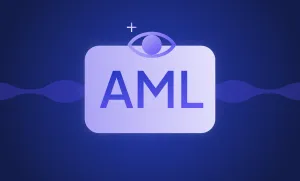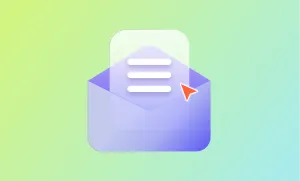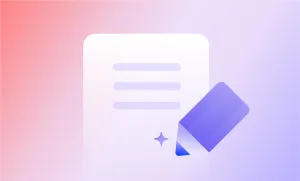Spotify just made a move that could shake up the podcasting world as we know it.
Starting next year, the platform will reward podcasters who create video content with a new monetization system based on performance.
If you’re a podcaster—or even just thinking about starting a podcast—this should grab your attention.
The company’s “Partner Program” now sends a clear message: video is becoming a must-have feature for podcasts. But luckily, it's not just about the money. Spotify is leaning into video in a big way, unveiling new features and tools to help podcasters not only create but thrive in this hybrid medium.
What does all of this mean for you as a podcaster? Is video really the future, or is this just another trend? Let’s break it down.
The Big Shift: Spotify’s New Video Strategy
Starting January 2, 2025, Spotify will pay video podcast creators based on their content’s performance, offering a new revenue stream that goes beyond traditional ads. It’s called the “Partner Program,” and it’s designed to lure podcasters into creating more video content, challenging YouTube’s dominance in the space.
Here’s what’s changing:
1) Monetization Beyond Ads
Up until now, podcast creators on Spotify could monetize through ads or listener subscriptions. The new program adds a fresh incentive: performance-based payouts. If your video podcast gains traction, you get rewarded directly. This approach mirrors YouTube’s ad revenue-sharing model, but Spotify is aiming to make it simpler and more podcast-specific.
2) Ad-Free Viewing for Premium Users
A key part of Spotify’s pitch is the ability for premium subscribers to watch video podcasts without interruptions. For viewers, this creates a smoother, more immersive experience. For creators, it means their content could potentially reach an audience that’s more engaged and less likely to bounce due to intrusive ads.
3) Improved Video Tools
While a large chunk of this recent update revolves around monetization, Spotify is also rolling out a suite of new features designed to enhance video content:
- Chapters: Let listeners navigate video episodes more easily.
- Thumbnail Scrubbing: Make skimming through episodes seamless.
- Comments: Allow audiences to interact directly with creators and each other.
- Clip Uploading: Promote your podcast with short clips directly on Spotify’s app.
- Custom Thumbnails: Just like on YouTube, you can now choose thumbnails that entice viewers to click.
Why Video Podcasting is On the Rise
It’s not hard to see why video is becoming a dominant force in podcasting. The numbers alone paint a clear picture: nearly two-thirds of podcast listeners now say they prefer video podcasts. That’s a seismic shift for an industry traditionally built around audio. But what’s driving this preference?
For one, video brings an extra dimension to the storytelling experience. Podcasts are already intimate since you’re speaking directly to your audience. But video adds another layer: eye contact, body language, and visual cues that enhance emotional connection. Think of the difference between hearing someone laugh and seeing them laugh. One is engaging, the other? Almost contagious.
Then there’s the shareability factor. A great audio moment might stick with your listeners, but a powerful or funny video clip can spread like wildfire across social media. TikTok, Instagram, and even YouTube Shorts have become essential tools for creators looking to grow their audiences, and video podcasts fit perfectly into this ecosystem.
Spotify knows this and is leaning hard into video to capitalize on the trend. With features like clip uploading and thumbnail customization, they’re giving creators tools to showcase their best moments, grab attention, and draw viewers into full episodes. But they’re also aiming higher. By offering an ad-free experience for premium users, Spotify is positioning itself as the more polished, professional home for video podcasts compared to platforms like YouTube (which are often saturated with ads.)
The Unique Appeal of Spotify’s Video Podcasts
Unlike YouTube, where video is the default and podcasts feel like an afterthought, Spotify has always been a podcast-first platform. This gives them an advantage. They understand how people consume podcasts and are building their video strategy with that in mind.
For example, Spotify’s integration of video and audio means listeners can switch seamlessly between watching and listening without losing their place. It’s perfect for multitaskers who might start a video podcast at home and finish it as an audio episode on-the-go.
Spotify is also going to be integrating video clips into users’ feeds and offering personalized recommendations, making it easier for creators to reach new audiences. It's yet one more design feature that aims to turn casual viewers into loyal fans.
The Challenges of Going Video
Of course, this shift isn’t all smooth sailing. The move to video introduces new challenges for podcasters who’ve focused exclusively on audio, some of the main ones being:
- Higher Production Demands: Video requires more equipment, like cameras, lighting, editing software, and more time to produce. For creators already stretched thin, this could feel overwhelming.
- Increased Competition: As more creators embrace video, standing out will become harder. The visual medium rewards creativity and polish, so those who simply hit “record” without thinking about framing, lighting, or post-production may struggle to gain traction.
- Audience Expectations: Once you go video, your audience may expect it for every episode. This can add pressure to consistently deliver high-quality visuals, even if you’re short on time or resources.
But the payoff? Huge. Video podcasts not only open up new revenue streams (like Spotify’s Partner Program,) but they also broaden your reach. A well-executed video podcast can bring in viewers who might never have discovered your show through audio alone.
Spotify's push, right now, is first and foremost about meeting creators and audiences where they’re headed. But we have to see how this unfolds, and it will be up to creators to decide whether video is a good fit for their content, their audience, and their goals.
Lessons from YouTube: What Spotify Gets Right (and What It Doesn’t)
When it comes to video podcasting, YouTube is undeniably the giant in the room. For years, it’s been the go-to platform for creators looking to reach a global audience with video content. Its success lies in its simple yet powerful model: ad revenue sharing. Creators upload videos, and if they perform well, they get a cut of the billions YouTube generates annually.
Spotify is clearly inspired by this approach, but it’s also carving out its own path by tailoring the experience to podcasters. Unlike YouTube, where podcasts often feel like a secondary offering, Spotify’s ecosystem is built with podcasters in mind. Their monetization program, ad-free video options, and integrated discovery tools are all designed to address the unique needs of podcast creators.
If you’re a podcaster weighing your options, here’s the key takeaway: you don’t have to choose one platform over the other. Spotify’s tools and monetization incentives make it an exciting option, but YouTube’s reach and established ecosystem are hard to ignore.
Think about your goals:
- If you’re looking to maximize visibility, YouTube’s massive audience may be your best bet.
- If you want a platform that’s tailored to podcasting and offers flexibility between video and audio, Spotify could be your game-changer.
Ultimately, the smart move might be to embrace both platforms strategically, tailoring your content to each other while leveraging their unique strengths.
The Future of Podcasting: Is Audio Enough?
For years, the best part about podcasts was that they were (relatively) simple. All you needed was a microphone, a great idea, and a distribution platform. But as Spotify’s latest pivot suggests, that era might be coming to an end... Or at least evolving.
Video is quickly becoming a core expectation for many listeners, and Spotify’s push into video is both a response to and a catalyst for this shift. The question is: can audio-only podcasts remain competitive in this landscape, or is video becoming essential to survival?
Why Video is Changing the Game
At its heart, podcasting has always been about connection. Whether it’s through storytelling, education, or entertainment, the medium thrives on creating a bond between host and listener. Video enhances this connection in ways audio simply can’t. And this is how:
- Stronger Engagement: Seeing a host’s expressions, gestures, and reactions can make the experience feel more personal and immersive. It turns a passive listener into an active viewer, deepening their engagement with your content.
- Better Shareability: Social media is driven by visuals, and video podcasts are primed for these platforms. A well-edited clip can introduce your podcast to entirely new audiences who might never have discovered it through traditional audio.
- Competitive Edge: As platforms like Spotify, YouTube, and even TikTok lean harder into video-first formats, creators who adapt early are better positioned to stand out.
However, there’s still a significant audience that values the convenience of audio-only content. After all, podcasts fit perfectly into moments where watching isn’t practical, like driving, exercising, or working. This means the future of podcasting is unlikely to be exclusively video or audio but a hybrid of both.
The Hybrid Model: Best of Both Worlds
The hybrid model is where podcasting seems to be headed. Video for when your audience wants to watch, and audio for when they just want to listen. Platforms like Spotify are becoming uniquely positioned to support this duality.
With Spotify, you don’t have to choose. You can record a video podcast, and your audience can decide whether to watch or listen. This flexibility not only caters to different preferences but also ensures you don’t alienate long-time fans who might not care about video.
For creators, this hybrid model offers opportunities to expand your audience and increase engagement without abandoning your roots. Start with your core audio content, then add video where it makes sense.
For example:
– Use video to enhance interviews, allowing your audience to see the chemistry between guests.
– Add visuals to storytelling episodes to draw viewers deeper into your world.
– Create short video clips to promote full-length episodes on social media.
By embracing both formats, you future-proof your podcast while staying true to what made it successful in the first place.
Is Audio Alone Enough Anymore?
The honest answer? It depends on your goals.
For creators who have built a loyal, niche audience around audio-only content, there’s no immediate pressure to jump into video. Audio will always have its place: it’s portable, low-maintenance, and intimate in a way video can’t always replicate.
But for podcasters looking to grow their audience or monetize more effectively, ignoring video might be a missed opportunity. Platforms like Spotify are investing heavily in video for a reason: it works.
Ultimately, the decision to add video comes down to your audience, your resources, and your vision for the future. If video aligns with your goals, now is the time to experiment. If it doesn’t, that’s okay too. What matters most is delivering content that resonates—whether your audience is watching or listening.
Tips for Podcasters Looking to Go Visual
Making the leap from audio-only to video podcasting might sound daunting, but it doesn’t have to be. The key is to start small, stay consistent, and make the most of tools that are designed to help you succeed. Whether you’re dipping your toes into video or diving in headfirst, here are practical steps to guide you.
1) Start with the Essentials
You don’t need a Hollywood setup to create engaging video podcasts. Start with what you have and upgrade as your audience and budget grow.
- Camera: A decent webcam or your smartphone can work wonders. Many creators start with devices they already own before investing in professional cameras.
- Lighting: Natural light is free and effective. Position yourself near a window or use inexpensive ring lights to improve your video quality.
- Editing Software: AI-powered platforms like Podcastle make it easy to edit videos without a steep learning curve. These can remove background noises, upscale videos, and automatically generate subtitles or captions in just a click.
2) Optimize Your Presentation
Video adds an entirely new dimension to your podcast, which means you’ll need to think about how you and your setup appear on camera.
- Background: Choose a clean, clutter-free backdrop. Add a touch of personality with plants, books, or branded elements, but avoid distractions that pull focus away from you. If that's not possible, you can always rely on AI software to blur your background.
- Framing: Make sure you’re centered in the shot with good headroom. Look directly at the camera when speaking to create a sense of connection.
- Energy: On camera, your energy needs to be slightly higher than it might be for audio-only. This doesn’t mean being over the top—just engage your audience with clear, confident communication.
3) Repurpose Content to Maximize Reach
One of the biggest advantages of video is its versatility. A single recording session can produce multiple pieces of content that work across different platforms.
- Clips: Use Spotify’s clip-uploading feature to create short, attention-grabbing highlights from your episodes. These clips can be shared on social media to draw viewers into the full episode.
- Thumbnails: Design eye-catching thumbnails for your episodes. Like book covers, thumbnails often determine whether someone clicks or scrolls past. Keep them bold, simple, and aligned with your podcast’s branding.
- Social Media: Platforms like TikTok, Instagram Reels, and YouTube Shorts thrive on short-form content. Edit and share engaging snippets to reach new audiences where they’re already scrolling.
4) Use Spotify’s Tools to Your Advantage
With Spotify’s new features rolling out, all of which are specifically designed to make video podcasting easier and more effective, you can amplify the way you make content as such:
- Chapters: Break your episodes into sections to help viewers navigate your content. This is especially useful for long episodes or multi-topic discussions.
- Comments: Engage with your audience directly by responding to their feedback and questions. Building a community around your content encourages repeat viewership.
- Performance Analytics: Use Spotify’s redesigned creator dashboard to track which episodes and formats resonate most with your audience. These insights can guide your future content strategy.
5) Build Video into Your Workflow
If adding video feels overwhelming, integrate it into your existing workflow gradually.
- Batch Recording: Film multiple episodes in one session to streamline production. This minimizes setup time and allows you to focus on editing and distribution later.
- Hybrid Releases: Start by offering video for select episodes while maintaining an audio-only format for others. This lets you test the waters without committing to a full transition.
- Set Realistic Goals: Don’t aim for viral success right away. Instead, focus on building consistency and quality over time.
The Next Chapter for Podcasting
Spotify is challenging the way we think about podcasts. It’s no longer just about what you hear, it’s also about what you see and how you engage.
For podcasters, this moment is both an opportunity and a challenge. Video offers the chance to reach new audiences, deepen connections with existing fans, and tap into fresh monetization streams. But it also requires more effort: new skills, additional resources, and a willingness to step outside the comfort zone of audio-only production.
The good news? You don’t have to go all-in on video overnight. Start small, experiment with video on platforms like Spotify, and let your audience guide your next steps.
As Spotify CEO Daniel Ek put it, their goal is to free creators up to do what they love most: creating. Whether you embrace video today or stick with audio for now, the important thing is to keep creating content that resonates. The podcasting landscape is changing, and the creators who adapt will be the ones leading the charge.
So, what’s your next move? Will you double down on audio, dip your toes into video, or dive in headfirst?








